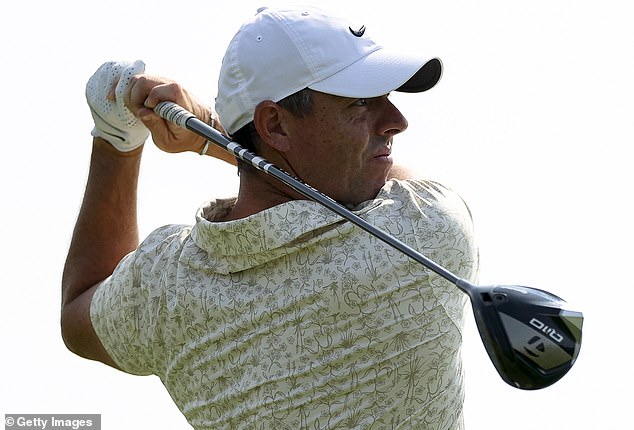Rory McIlroy’s US Open Journey: A Rollercoaster Ride at Oakmont Country Club
Rory McIlroy made headlines at the recent US Open, showcasing a blend of promise and disappointment during his round at the iconic Oakmont Country Club. Following a challenging performance that culminated in a score of 74, McIlroy’s trip through the famous course has offered both drama and valuable lessons. As he continues his quest for glory, his evolving story is one of intrigue that captivates both fans and analysts alike.
Despite the tribulations faced on the course, McIlroy’s experience at Oakmont can be framed as a tale of resilience and grit. Unfortunately, his fifth consecutive major round without addressing the media speaks to his frustrations. As fans await updates from the golfer, the silent walk past microphones highlights the emotional toll that competitive golf can exact, particularly when the stakes are high.
The opening round for McIlroy was marked by a promising start, standing at two under par. However, a disastrous inward nine derailed his efforts, leaving him at four over par by the end of the round. Observers were particularly surprised by this sharp decline, as Rory transitioned from being a contender to trailing by eight strokes behind early clubhouse leader JJ Spaun.
One glimmer of hope for McIlroy is the performance of other top golfers struggling alongside him. Notably, Scottie Scheffler and Bryson DeChambeau also faced setbacks, managing only marginally better scores than McIlroy. The presence of several high-profile players experiencing similar difficulties speaks volumes about the demanding nature of the Oakmont course.
Highlighting the rare exceptions at the top of the leaderboard, Brooks Koepka, who concluded with an impressive 68, positioned himself just ahead of Jon Rahm. His consistent performance stands as a reminder that, even under pressure, top players can navigate difficult courses with skill and precision. For those following the tournament, Koepka’s proximity to the lead surely induced anxiety among the competitors.
While McIlroy struggled with his game, he did witness a remarkable performance from JJ Spaun, who finished his first round at an impressive four under par. As the sole player to achieve such a feat, Spaun’s zero-bogey round stood as a notable contrast to the challenges faced by many of the tournament’s elite. The difficulty of the Oakmont course resonates deeply, with memories of past US Opens where only a single bogey-free round was recorded enhancing Spaun’s accomplishment.
Amidst speculation about course difficulty, comparisons have arisen about Oakmont’s perceived ease. The reality of its challenges, however, remains evident. The hard-fought scores achieved by leading players like DeChambeau, who described the course conditions as "brutal," underscores the reality of navigating such a demanding venue. The potential for rain over the weekend further complicates the situation, creating an unpredictable atmosphere for players.
As the tournament progresses, the focus shifts to player adaptability and mental resilience on the course. Challenges were not confined to McIlroy alone, as other competitors faced their own trials. Shane Lowry, despite strong moments in his round, ultimately struggled to achieve a respectable score, exemplifying just how unforgiving Oakmont can be. Lower-ranked players like Robert MacIntyre also showcased resilience, posting a steady level-par score that leaves him well-placed amid the chaos of the tournament.
McIlroy began his round on a positive note but soon found himself faltering due to an uncooperative driver and difficulties with short-range putts. This ongoing battle with inconsistencies raises questions about his equipment choices—a necessary examination for any golfer seeking success. With new driver configurations failing to yield positive results, McIlroy’s struggle is an experience many athletes can relate to: the search for the perfect balance amid ongoing performance issues.
In the face of adversity, Rory McIlroy’s journey at the US Open serves as both a cautionary tale and an inspiring narrative of determination. While Oakmont’s challenges proved formidable, the golfer’s experience serves as a reminder of the relentless nature of professional sports. As we move forward, all eyes will remain closely watching the evolution of McIlroy’s game and his potential reignition as a top competitor on the golf circuit.
Conclusion: Embracing the Challenge Ahead
As Rory McIlroy navigates the aftermath of his round at Oakmont, the key takeaway remains his resilience. Golf, after all, is a game filled with peaks and valleys, and every professional—no matter how seasoned—faces moments of doubt and difficulty. With the support of his fans and the invaluable lessons learned from this experience, McIlroy has an opportunity to bounce back and refine his strategy for future tournaments. The story continues, and the world eagerly awaits Rwanda’s next chapter in his illustrious career.


